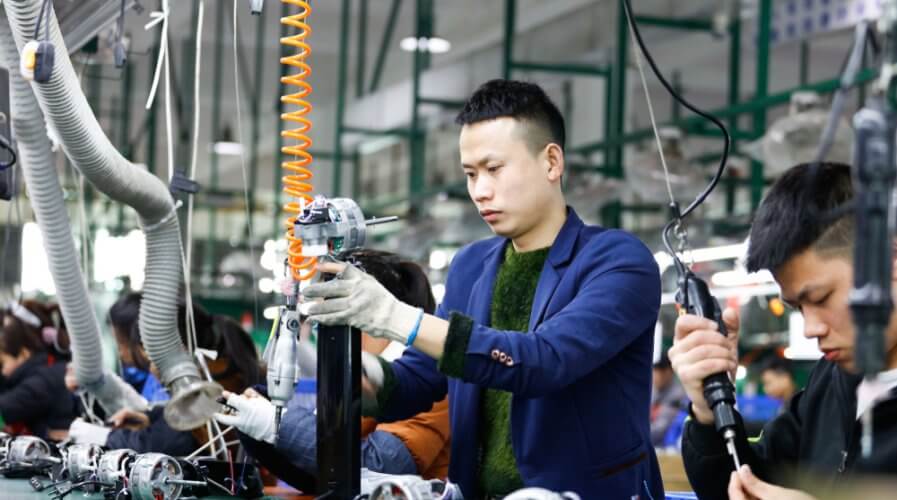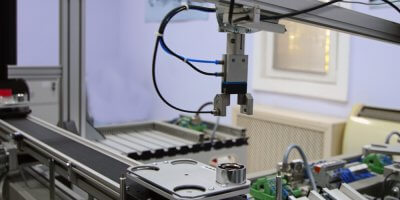
Jobs will inevitably be replaced in the age of automation. Are you preparing your workers for it? Source: Shutterstock
Businesses must take a proactive approach in developing human capital
TECHNOLOGY is changing the way people work.
Although it’s meant to drive efficiency, technology will inevitably cause disruptions, as organizations grapple with the complexities and uncertainties that come with the change.
Business leaders need to understand how to enable this change in their organizations by taking a more proactive approach, transforming processes to be more agile, instead of passively waiting for change to happen.
According to a Deloitte report, most business leaders do not think they have the right talents in their workforce who possess skillsets needed for the future. Alarmingly, while more than 80 percent of businesses claimed to be doing all they can to build the workforce, only less than 20 percent of executives regard talent and HR as a high priority.
This shows a great disparity between what the industry needs for change to happen, and what companies deemed to be enough effort to drive that change.
However, a separate report also from Deloitte noted that leaders must prepare for radical changes. Take automation for example – more than half of current existing jobs are at risk of being automated in the next five years; ASEAN is noted to be especially vulnerable to that.
While this isn’t to say automation will replace entire job functions, significant parts of every profession will be impacted. Humans are expected to work alongside machines using technologies such as AI, machine learning, or natural language processing, to make business processes quicker and more accurate, while reducing costs.
Having said that, a lot of the skills that workers currently possess can be easily transferred and used to create a more digital-centric workplace. Organizations will be required to redesign job roles to suit the operations and maximize the potential of both resources, but the changes are less drastic than what is perceived.
Take machine learning, for example. In the telecommunications industry, drones with machine learning capabilities are used to expedite inspection and maintenance of cell towers. The AI can help identify potential problem areas and highlight points of interests the technician needs to analyze.
In this case, the technician wouldn’t need to spend half an hour to do a full detailed inspection; instead, he/she can rely on the AI to speed up the process. The role of said technician doesn’t change much, but they would need training in operating drones.
The nature of work is also changing. People are demanding more flexible working arrangements – think freelancers, contractors, and gig-workers. Gone are the days when salaried employees made up the bulk of the labor force; organizations that want to retain the right talent must change their recruitment model to suit the needs of the future.
Especially for millennials and gen Z workers, the gig-economy upped their income potential while providing flexibility – something highly sought after by this cohort of the population. This is especially relevant in Asia, where almost two-thirds of the workforce are young people, with very different career expectations.
For instance, a young entry-level worker might enter the workforce, pick up some skills from their employer, and move on to a freelance role. After which, they may have acquired enough skills to evolve into a consultant, where they could be providing the necessary services to their first employer.
Using these type of workers (known as off-balance sheet workers) is also in the interest of companies. Businesses can have access to people with skillsets that best suit their needs at a certain point in time, without facing delays in recruiting the right talents for the job. In the case of previous hires, the former employee might not want to return to a company full time, but the firm can still benefit from the expertise that the previous recruit now brings.
Beyond retaining the right skills, it is also a top priority for organizations to constantly reskill their workforce. Deloitte found that the half-life of a skill has dropped from 30 years to 6 years, even for fresh graduates. This means, what is learned 12 years ago is no longer relevant, and half of what people have learned 6 years ago is now obsolete.
Organizations can no longer rely on the education system to churn out workers that are ready for the workplace. With the average retirement age increasing, upskilling and reskilling is a necessity for workers of all ages.
Individuals, companies, and educational institutions must work together for a solution that promotes progressive ways of working. Governments and policymakers must also take initiative in reforming education and labor market regulations, developing standards that are conducive to future work opportunities.
The digital era requires businesses to think big, start small, and remain agile. They must align talent development and workforce strategies with growth plans. Companies that are passively waiting for ready-made human capital will find themselves phased out very quickly.
READ MORE
- Safer Automation: How Sophic and Firmus Succeeded in Malaysia with MDEC’s Support
- Privilege granted, not gained: Intelligent authorization for enhanced infrastructure productivity
- Low-Code produces the Proof-of-Possibilities
- New Wearables Enable Staff to Work Faster and Safer
- Experts weigh in on Oracle’s departure from adland






